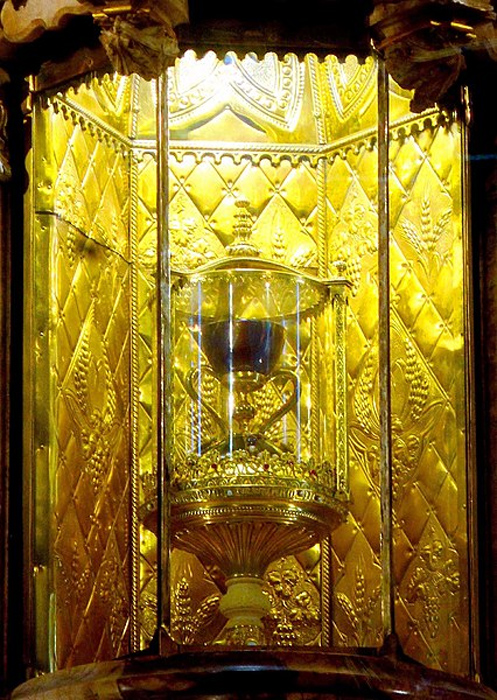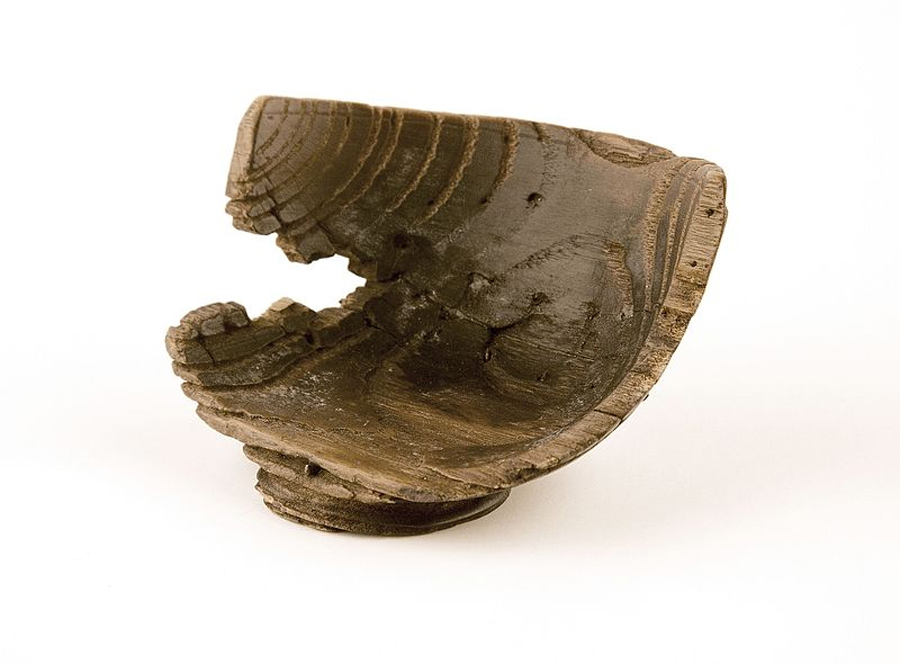The search for the Holy Grail echoes down the centuries. Great leaders and great empires have searched for the cup, which is said to have magical powers to heal the sick and grant eternal life.
The grail, variously the cup which Jesus drank from at the last cupper before his crucifixion, or the cup which caught his blood as he was stabbed on the cross, is possibly the greatest artifact of Christianity. And many contenders have been put forward over the years claiming to be the true Grail.
One such is the Sacro Catino. Currently preserved in the Treasury Museum of the Cathedral of San Lorenzo in Genoa, in Italy, the origins of this beautiful dish are obscure. Said to have been recovered during the crusades and apparently made from a single, huge emerald, the dish seems to glow with its own inner light.
This vessel reached Genoa in the initial years of the 12th century. It is said to have been taken during the sack of Caesarea, which occurred in 1101 following to the First Crusade. Such a beautiful and valuable dish could only have come from the table of Jesus himself. Right?
But, the Sacro Catino has a history even after this divine association. Here is the story of Napoleon’s involvement with this grail, and what happened to it long after its discovery which made it seem perhaps not so special, after all.
What is the Holy Grail?
Holy Grail, also known as Holy Chalice, is in the Christian tradition most commonly said to be the cup that Jesus used for serving wine in his last supper. Two artifacts in western Christianity rose to prominence as the Holy Chalice during the later medieval period.

The first one is named Santo Caliz, a dark red agate cup that is preserved in the Cathedral of Valencia. This cup dates to around the 1st century AD, and pilgrims travel to see it to this day.
- Land of the Rising Sun: Did Jesus Retire To Rural Japan?
- The Holy Foreskin: Where is the Last Piece of the Body of Christ?
The second artifact that claimed to be the Holy Grail was the Sacro Catino of Genoa Cathedral. It is a flat green dish, larger and wider than the Santo Caliz. The provenance of this dish is also less secure, and only at the end of the 13th century does it appear to have been suggested as the true Grail.
The Genoa Chalice
The Sacro Catino is a hexagonal dish that seemed to have been made in the Roman era. The dimensions of this dish are around 9cm high and 33m wide (3.5 inches by 13 inches). Looted from Caesarea, in modern Israel, it travelled to Genoa as a spoil of war.
The Genoese exhibited the bowl as a treasure and insisted on its miraculous properties. Legends started to attach themselves to the bowl, and the first claim to Sacro Catino for being a Holy Grail was made in the 1290s by Jacobus de Vorgine, in his Chronicon.
This soon became the established story of the vessel. A visitor to Genoa in 1436 named Pedro Tafur, reported that the true Holy Grail was to be found there, made out of a single emerald and preserved in Genoa Cathedral.
The bowl was considered sacred and remained undisturbed through the turbulent centuries of the Italian city states and the Renaissance. But in 1805, a new kind of leader arrived on the scene, one with a limited appreciation for holiness and a great desire for his own aggrandizement: Napoleon.
During his conquest of Italy this bowl was seized by Napoleon and was taken to Paris. Somehow, on the journey to Paris, Napoleon’s men managed to drop the bowl and it broke into pieces.

Among other things, this seriously damaged the credibility of the claims that the bowl was the true Grail. For one, it was found to be made not of a single emerald, but of glass. It was returned to Genoa in 1816, but by then the damage had literally been done.
The Sacro Catino in France
While the Sacro Catino was in France, several studies were carried out upon it by the Academy of Science in the Institute of France. These studies confirmed that this bowl was made of Byzantine glass and not any emerald.
- Why was the Infancy Gospel of Thomas Excluded from the Bible?
- Pope Joan: Did The Church Elect a Female Pope?
With later studies, the accurate age of the object started to become clear. The verdict was that this bowl was of Islamic manufacture that dates to the 9th or 10th century. So, it is believed that the Sacro Catino is not the real Holy Grail but is just a copy of what could be the real bowl that Jesus used during his last supper.
Broken and subject to several restorations while in French hands, the bowl required further improvements and repairs one returned to Genoa. It remains on display to this day, one of the two medieval-era candidates for the Holy Grail.
Other Modern Candidates
Many historians are skeptical as to any candidates publicly presented as the Holy Grail. Moreover, there is no evidence to prove that any Holy Grail even exists. But today, there are many modern candidates for the Grail, put forward by the hopeful.
One such is the Chalice of Dona Urraca, a highly bejeweled cup kept within the Basilica of San Isidoro of Leon, Spain. This artifact was linked to the Holy Grail in the book Los Reyes del Grial of 2014.
Another is the Antioch Chalice, a silver-gilt object originally identified as from the early Christian period. It is preserved with the Metropolitan Museum of Art, New York, who subsequently concluded that it is not the Grail.

None is perhaps so unusual, though, as the Nanteos Cup, a wooden bowl in Rhydyfelin, near Aberystwyth in Wales. The bowl is said to have miraculous healing powers, and a wooden bowl would be much more suitable as the cup of a carpenter than the fabulously decorated candidates elsewhere.
Overall, there are hundreds of candidates for an artifact which may not even exist, and which may have never existed. The Sacro Catino may just be glass, and it may be broken. It may have been made a thousand years after Jesus died, and it may not even be a replica of something that really existed during Jesus’s life.
But it still draws the faithful. And for the faithful, belief is everything.
Top Image: The Sacro Catino. Source: Sylvain Billet / CC BY-SA 4.0.
By Bipin Dimri